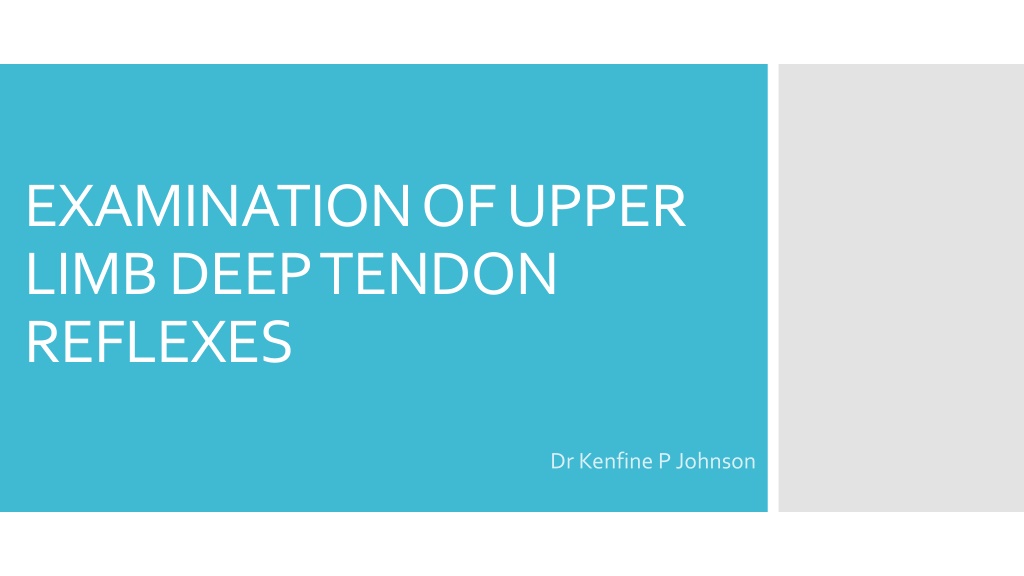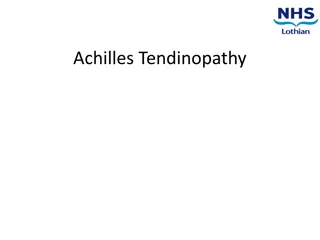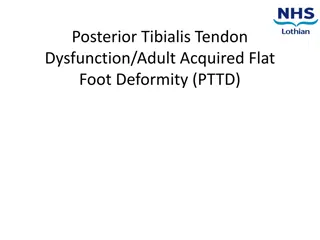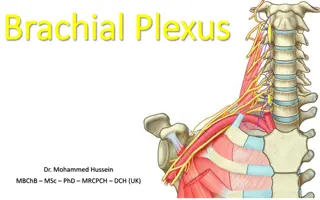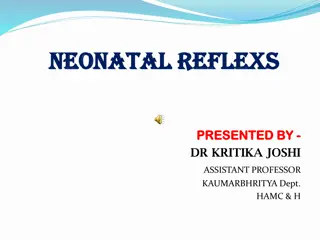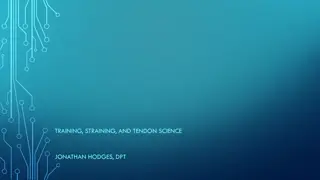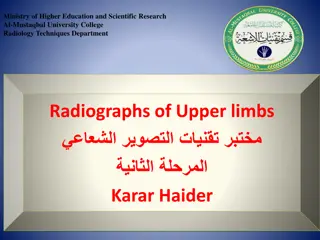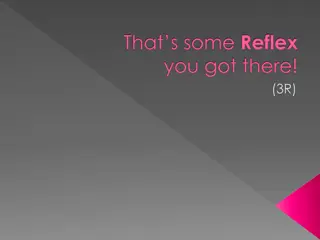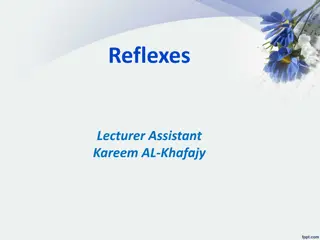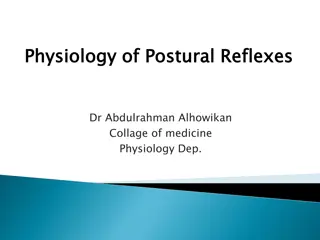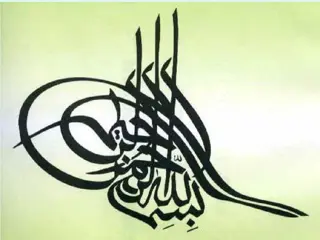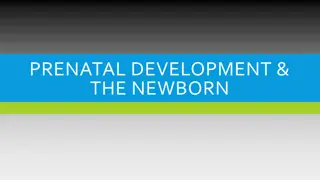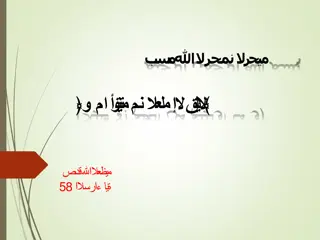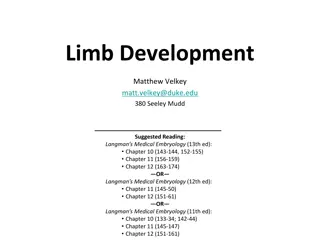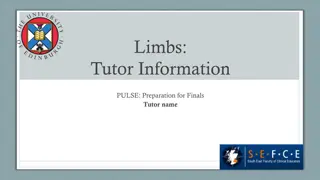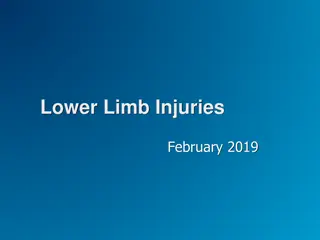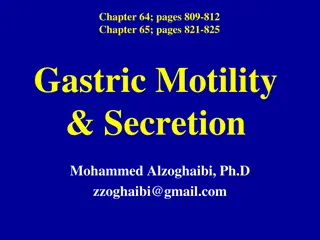Understanding Upper Limb Deep Tendon Reflexes Examination
Exploring the intricacies of upper limb deep tendon reflexes (DTR) examination, this comprehensive guide elaborates on the monosynaptic stretch reflex mechanism, protective role of stretch reflexes, grading of reflexes, factors influencing reflex activity, and reinforcement techniques like the Jendrassik maneuver.
Download Presentation

Please find below an Image/Link to download the presentation.
The content on the website is provided AS IS for your information and personal use only. It may not be sold, licensed, or shared on other websites without obtaining consent from the author. Download presentation by click this link. If you encounter any issues during the download, it is possible that the publisher has removed the file from their server.
E N D
Presentation Transcript
EXAMINATION OF UPPER LIMB DEEP TENDON REFLEXES Dr Kenfine P Johnson
DTR is a monosynaptic stretch reflex, sudden lengthening stretches the muscle spindles which sends impulses via the primary spindle afferents into the spinal cord. The spindle afferents synapse on the alpha motor neurons innervating the muscles causing a reflex contraction of muscle. This sequence of lenghthening,contraction and then relaxation is a stretch reflex(deep tendon/muscle stretch/myotatic/proprioceptive)
Stretch reflexes serve a protective role as it help to encounter any sudden unexpected forces and maintain erect posture The DTR are elicited by application of stretch stimulus to either tendons,periosteumor occasionally to bones, joints, fascia or aponeurotic structures.
Reflexes may be graded as 0 - absent 1+ - present but diminished 2+ - normal 3+ -increased but not necessarily to a pathologic degree 4+ -markedly hyperactive often with extra beats or accompanying sustained clonus
The activity of a reflex is judged by speed and vigor of the response ,the range of movement and duration of contraction. When the reflex is very active ,the response may involve adjacent or contralateral muscles and the contraction of one muscle may be accompanied by contraction of other muscles. This is referred as spread or irradiation of reflex Inverted reflexes are contractions of the opposite / antagonists when the segmental reflex is absent
The reflex can be reinforced by using Jendrassikmaneuver ,the patient attempts to pull the hands apart with fingers flexed and hooked together, palms facing A slight increase in tension of the muscle being tested may reinforce the reflex response Reinforcement may increase the amplitude of a sluggish reflex or bring out a latent reflex not otherwise obtainable.
A depressed or absent reflex can be due to lesions involving sensory nerve,posteriorroot,dorsalroot ganglion,or intramedullary pathways between dorsal root entry zone and anterior horn,motorunit Hypoactive reflexes Abnormal in peripheral neuropathy,myopathy,myasthenia,musculardystrophy. Often absent in deep coma,narcosis,sedationand spinal shock
Characterisedby decrease in threshold,decreasein latency exaggeration of power and range of movement,prolongationof reflex contraction,extensionof reflexogenic zone and spread of reflex response Hyperactive reflexes Seen in lesions of corticospinal tract In hemiplegia flexor reflexes of upper extremities are exaggerated
Segmental level is C5-C6 Peripheral nerve is musculocutaneus nerve Biceps reflex Major response is contraction of biceps muscle with flexion of elbow and supination If the reflex is exaggerated there may be spread /irradiation of reflex with flexion of wrist and fingers and adduction of thumb
The arm is relaxed and forearm is slightly pronated and midway between flexion and extension,the examiner places the palmar surface of her extended thumb or finger on patient s biceps tendon and strike extensor surface
Segmental level is C6-C7 Peripheral nerve is radial nerve Triceps reflex Response is contraction of triceps muscle with extension of elbow The paradoxical or inverted triceps jerk consists of flexion of elbow with percussion of triceps tendon,occurs in lesions of C7,C8 segments.
The arm is placed midway between flexion and extension and may be rested in patient s lap ,on her thigh or hip or on the examiners hand. Tapping triceps tendon just above its insertion on the olecranon process of ulna.
Segmental level is C5-C6 Peripheral nerve is radial nerve Brachioradialis /Supinator reflex Response is flexion of elbow with variable supination If the reflex is exaggerated there is associated flexion of wrist and fingers without flexion and supination of elbow is termed as inversion of the reflex.
Tapping just above styloid process of radius with forearm held in semiflexion and semipronation.
Segment level is C8-T1 Finger flexor reflex Response is flexion of fingers and distal phalanx of thumb Also known as Wartenberg ssign
The patients hand is held in supination with the fingers slightly flexed. The examiner places her fingers against the patient s fingers and taps the back of her own fingers lightly
Segment is C5C6 via axillary nerve Tapping over insertion of deltoid muscle at the junction of upper and middle third of lateral aspect of humerus Deltoid reflex Response is slight abduction of upper arm
Mediated by medial and lateral pectoral nerveC5-T1 Response is adduction and slight internal rotation of arm at the shoulder. Pectoralis reflex In patients with cervical myelopathy a hyperactive pectoralis reflex indicates cord compression at C2C3 and or C3C4 levels.
With the patients arm in midposition between abduction and adduction ,the examiner places her finger as nearly as possible on the tendon of pectoralis major at its insertion on the greater tuberosity on the humerus.
In patients with upper extremity hyperreflexia tapping over the lateral aspect of clavicle is followed by extensive contraction of various muscle groups in upper limb Clavicle Reflex This is an indication of spread of reflex response Response is minimal ,usually absent except in upper extremity hyperreflexia
With the elbow in semiflexion and forearm semipronatedtapping over volar surface of distal radius or dorsal aspect of styloid process of ulna Response is supination followed by pronation of forearm.There may be flexion of wrist and fingers. Pronator reflex Major muscle pronator teres and quadratus Exaggerated in corticospinal tract lesions
Tapping over the vertebral border of scapula either at the tip of its spine or inferior angle Scapulohumeral reflex Retraction of scapula (rhomboids) elevation of scapula and adduction and external rotation of humerus(trapezius,lattismus,infraspinatusand teres minor)
Mediated by radial nerve C6-C8 With the forearm pronated and wrist hanging down tapping the extensor tendons of wrist Wrist extension reflex Response is contraction of extensor muscles and extension at wrist Sometimes there may be flexion of wrist and fingers (the carpometacarpal reflex)
With the hand supinated and fingers slightly flexed tapping over the flexor tendons of wrist on the volar surface of forearm Wrist flexion reflex Response is contraction of flexor muscles of hand and fingers Mediated by median and ulnar nerve C6-T1
Tapping the flexor pollicis longus tendon just above the pronator quadratus Thumb reflex Response is flexion of distal phalanx of thumb
